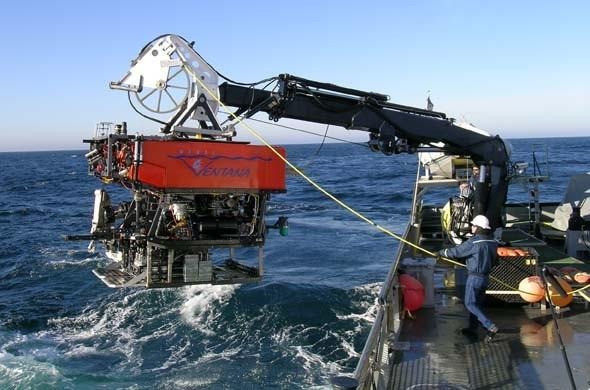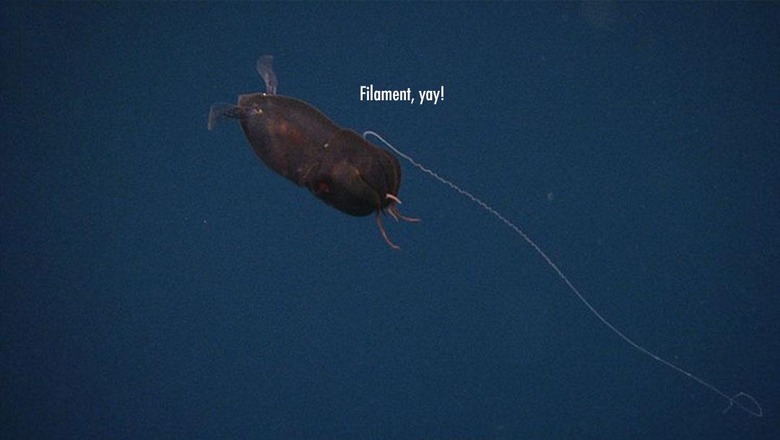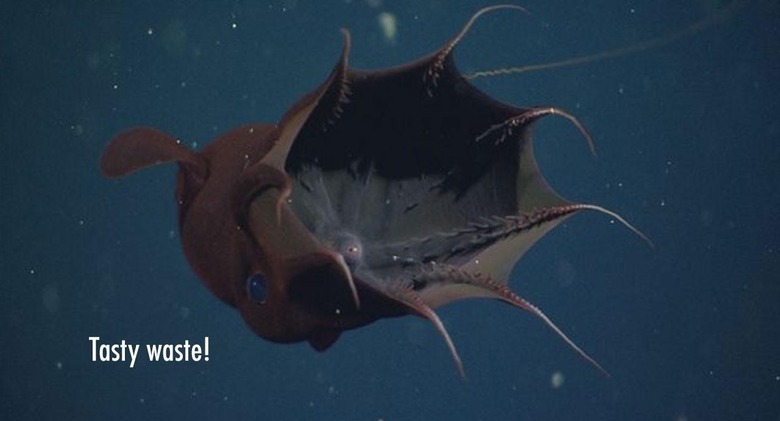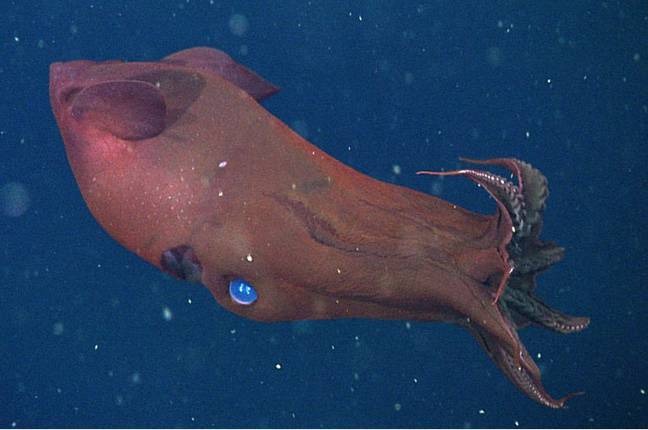Vampire Squid feeds upon waste, blasts eggs
Today you're going to learn about a squid that's been profiled by a couple of scientists in the latest Current Biology science publication. A paper has been released, you see, on the species Vampyroteuthis infernalis. That translates roughly to Infernal Vampire Squid, or Vampire Squid from Hell. It's not a pleasant name, to be sure, but it's fitting. This creature doesn't suck blood, but it does live as close to the underworld as you're going to get, in the deep ocean, and it does eat bits and pieces of other animals. Not living animals – unless by chance – but waste, mostly.
Above you'll see an (edited) photo of the creature as captured for one of two papers published by similar crews of scientists. This image shows a juvenile of the species up close and personal with its egg sack.
This sack contains hundred of eggs, and sits near the center of the animal while most of its actions are done with a number of arms and cirri.

This and other images in this article were captured in deep-sea video recordings from MBARI's remotely operated vehicles (ROVs). This creature lives between 600 to 900 metres (2,000 to 3,000 ft) below the sea.
Two major parts of the life of the Vampyroteuthis – the two primary functions it performs, as it were, are Eating and Reproducing.
Above: Video of Vampyroteuthis as presented by National Geographic in an early release on this set of papers headed by Bruce H. Robison.
Eating
One paper – published back in 2012, has Hendrik J. T. Hoving and Bruce H. Robison studying the animal. They show for the first time that two retractable filaments are used by Vampyroteuthis to capture detrital matter of various sizes. This includes everything from small particles to larger marine aggregates.

An especially long filament is what this creature uses to capture its prey – or its food, it might be more accurate to say, as its prey isn't something that it's really hunting. At the base of this filament is a short peduncle.
This creature uses its (two) filaments to capture anything that happens to float in its path – generally this means its eating a whole lot of waste from other animals.

"This feeding behavior is unlike any other cephalopod," says the first of two papers published on this animal.
"[It] reveals a unique adaptation that allows these animals to spend most of their life at depths where oxygen concentrations are very low, but where predators are few and typical cephalopod food is scarce."
Reproducing
Fast forward to 2015 and another paper has been produced by the same two researchers as the first paper, this time adding a third: Hendrik J T. Hoving, Vladimir V. Laptikhovsky, and Bruce H. Robison. They continue their work on Vampyroteuthis, this time focusing on reproductive abilities.

While most cephalopods breed near to or immediately before their life is over, this Vampyroteuthis blasts eggs from its body a multitude of times in its lifespan.
Examining a number of corpses of Vampyroteuthis, this team of researchers found that one creature had spawned eggs 38 times in its life at the point at which it died. It had at least 60 more batches of eggs – 600 or so eggs in all – that it would have released had it lived until its eggs were all released.
You can see the full research paper on reproduction under the title "Vampire squid reproductive strategy is unique among coleoid cephalopods" in Current Biology by Hendrik J T. Hoving, Vladimir V. Laptikhovsky, and Bruce H. Robison. See: Current Biology Volume 25, Issue 8, pR322–R323, 20 April 2015.
Additional information on the eating habits of this animal can be found in the paper "Vampire squid: detritivores in the oxygen minimum zone" by Hendrik J. T. Hoving and Bruce H. Robison under DOI: 10.1098/rspb.2012.1357 as published by The Royal Society Publishing Proceedings B.
